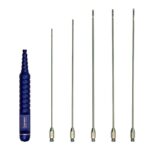Personal training is one of the most effective ways to achieve fitness goals, whether it’s weight loss, muscle gain, endurance improvement, or overall well-being. However, simply hiring a personal trainer is not enough—you need to optimize your training sessions to get the best results. This article explores key strategies to make personal training more effective, helping you maximize your investment in health and fitness.
Things to Consider in Effective Personal Training
1. Set Clear and Realistic Goals
Before starting personal training, define your goals clearly. Are you looking to lose weight, build strength, increase flexibility, or enhance athletic performance? A well-defined goal helps your trainer design a customized plan that aligns with your needs. Additionally, set realistic expectations—achieving fitness goals takes time, consistency, and effort.
Tips for Setting Goals:
- Use the SMART method (Specific, Measurable, Achievable, Relevant, Time-bound).
- Break larger goals into smaller milestones.
- Track progress regularly to stay motivated.
2. Choose the Right Personal Trainer
Not all personal trainers are the same. Selecting a trainer who aligns with your fitness goals, experience level, and personality can make a huge difference. Consider their certifications, specialization, experience, and client reviews before making a decision.
What to Look for in a Personal Trainer:
- Certified by a reputable organization (ACE, NASM, ISSA, etc.).
- Experience with clients who have similar goals.
- Strong communication and motivational skills.
- Ability to tailor workouts to individual needs and limitations.
3. Prioritize Proper Warm-ups and Cool-downs
Warming up before exercise and cooling down afterward is essential for preventing injuries and improving performance. A good warm-up prepares the body for physical activity by increasing blood flow, loosening muscles, and activating the nervous system. Similarly, a cool-down helps the body transition back to a resting state, reducing soreness and stiffness.
Effective Warm-up Routine:
- 5-10 minutes of light cardio (jogging, jumping jacks, cycling).
- Dynamic stretches to improve mobility.
- Sport-specific movements based on the workout.
Effective Cool-down Routine:
- 5 minutes of low-intensity movement (walking, slow cycling).
- Static stretching to relax muscles and improve flexibility.
- Deep breathing exercises for relaxation.
4. Focus on Proper Form and Technique
Executing exercises with proper form is crucial for preventing injuries and ensuring maximum effectiveness. Poor form can lead to muscle imbalances, joint strain, and long-term complications.
How to Improve Exercise Form:
- Work with a trainer who provides real-time feedback.
- Use mirrors to monitor posture and alignment.
- Start with lighter weights and gradually increase resistance.
- Avoid rushing through exercises; focus on controlled movements.
5. Maintain Consistency and Commitment
One of the biggest challenges in fitness is staying consistent. Training sporadically or skipping sessions can slow progress and lead to frustration.
Strategies to Stay Consistent:
- Set a regular training schedule and stick to it.
- Find an accountability partner or join group sessions for motivation.
- Track your workouts and celebrate small achievements.
- Make fitness a priority in your lifestyle.
6. Optimize Nutrition and Hydration
Exercise alone is not enough to achieve optimal results. Nutrition plays a vital role in fueling workouts, promoting muscle recovery, and supporting overall health.
Nutrition Tips for Effective Training:
- Eat a balanced diet rich in protein, healthy fats, and complex carbohydrates.
- Stay hydrated throughout the day and during workouts.
- Time your meals appropriately (e.g., pre-workout carbs for energy, post-workout protein for recovery).
- Avoid excessive processed foods and sugary drinks.
7. Incorporate Variety and Progressive Overload
Repeating the same workout routine can lead to plateaus and decreased motivation. To keep progressing, it’s important to introduce variety and progressively challenge the body.
Ways to Add Variety:
- Try different types of exercises (strength training, HIIT, functional training, etc.).
- Modify reps, sets, and intensity levels over time.
- Use different equipment (dumbbells, resistance bands, kettlebells, etc.).
- Incorporate new challenges such as supersets, circuits, or plyometrics.
8. Listen to Your Body and Allow Recovery
Overtraining can lead to burnout, injuries, and decreased performance. It’s important to balance intense workouts with adequate rest and recovery.
Recovery Tips:
- Get enough sleep (7-9 hours per night) for muscle repair and growth.
- Schedule rest days to allow muscles to recover.
- Use active recovery techniques (stretching, yoga, foam rolling).
- Listen to signs of fatigue and avoid pushing through pain.
9. Leverage Technology and Tracking Tools
Using fitness apps and wearable technology can help track progress, monitor heart rate, and ensure accountability. Many personal trainers also use data-driven methods to optimize workouts.
Useful Fitness Tools:
- Smartwatches and fitness trackers (Apple Watch, Fitbit, Garmin, etc.).
- Apps for tracking workouts, calories, and hydration (MyFitnessPal, Strava, etc.).
- Online coaching and virtual training programs.
10. Stay Motivated and Mentally Engaged
Mental attitude plays a huge role in fitness success. Staying motivated and engaged in training sessions will make the process more enjoyable and productive.
Ways to Stay Motivated:
- Set new challenges and personal records.
- Visualize success and remind yourself of why you started.
- Mix up your routine to avoid boredom.
- Reward yourself for achieving milestones (new workout gear, a relaxing massage, etc.).
Conclusion
Making personal training more effective requires a combination of goal setting, proper technique, consistency, nutrition, variety, and recovery. By implementing these strategies, you can maximize the benefits of your training sessions and achieve lasting fitness results. Whether you’re a beginner or an experienced athlete, working closely with a qualified trainer and staying committed to your plan will help you reach your full potential. A great personal trainer takes away half the stress of your fitness journey, making workouts more effective and enjoyable. So, choose wisely! If you’re searching for a personal trainer in Dubai or anywhere else, a well-thought-out decision will always be one you won’t regret.
By following these guidelines, you can transform your personal training experience into a highly efficient and rewarding journey. Remember, the key to success lies in dedication, smart planning, and continuous improvement. With the right mindset and approach, you can achieve your fitness goals and enjoy a healthier, stronger body.







